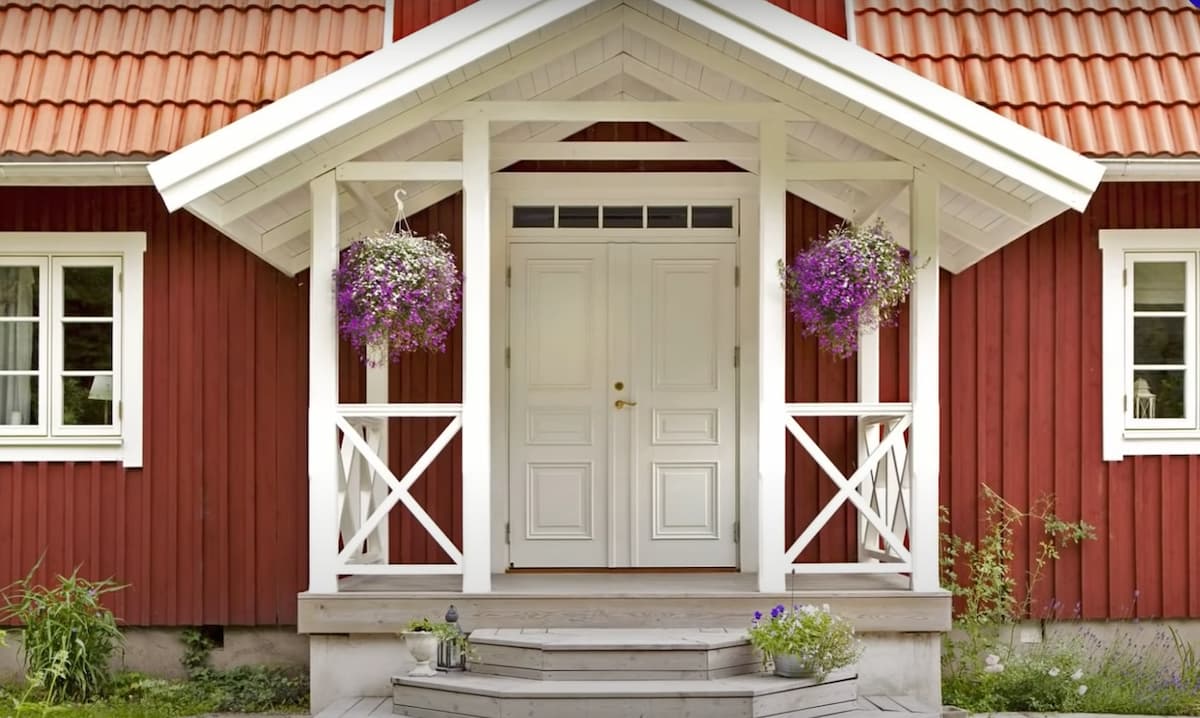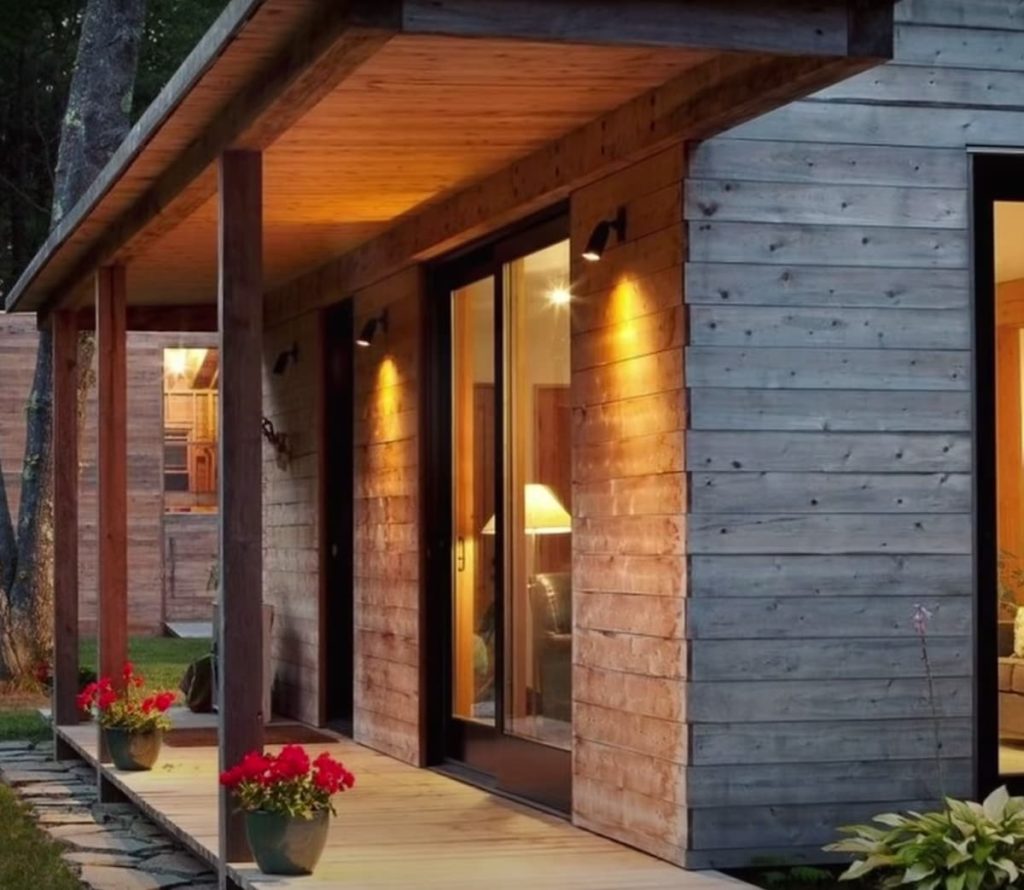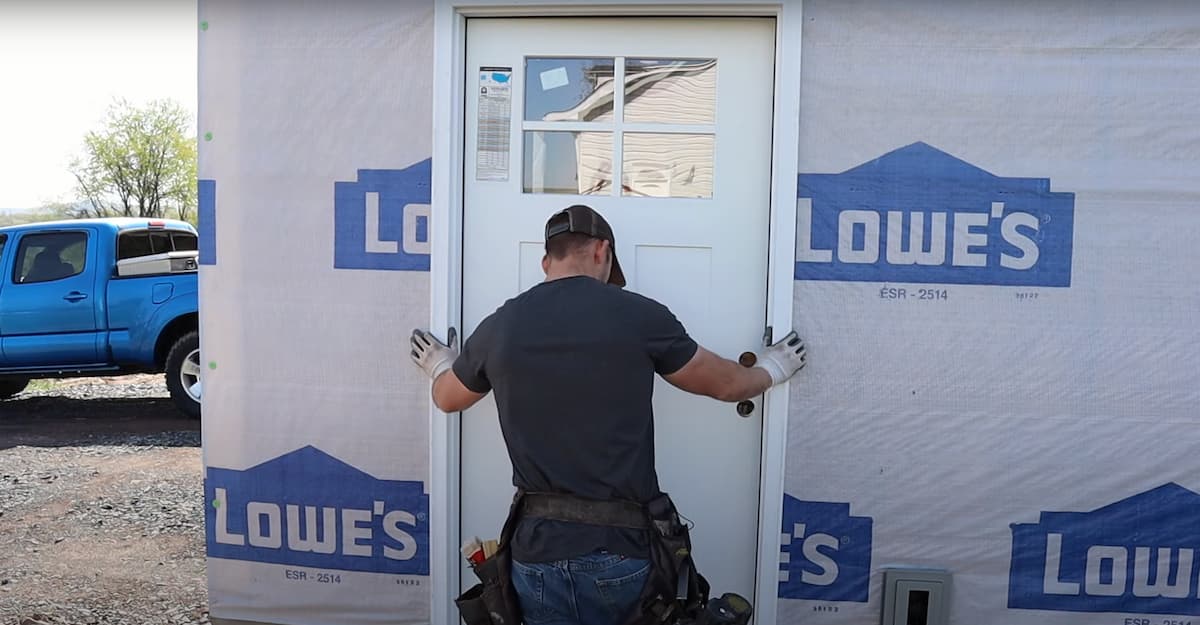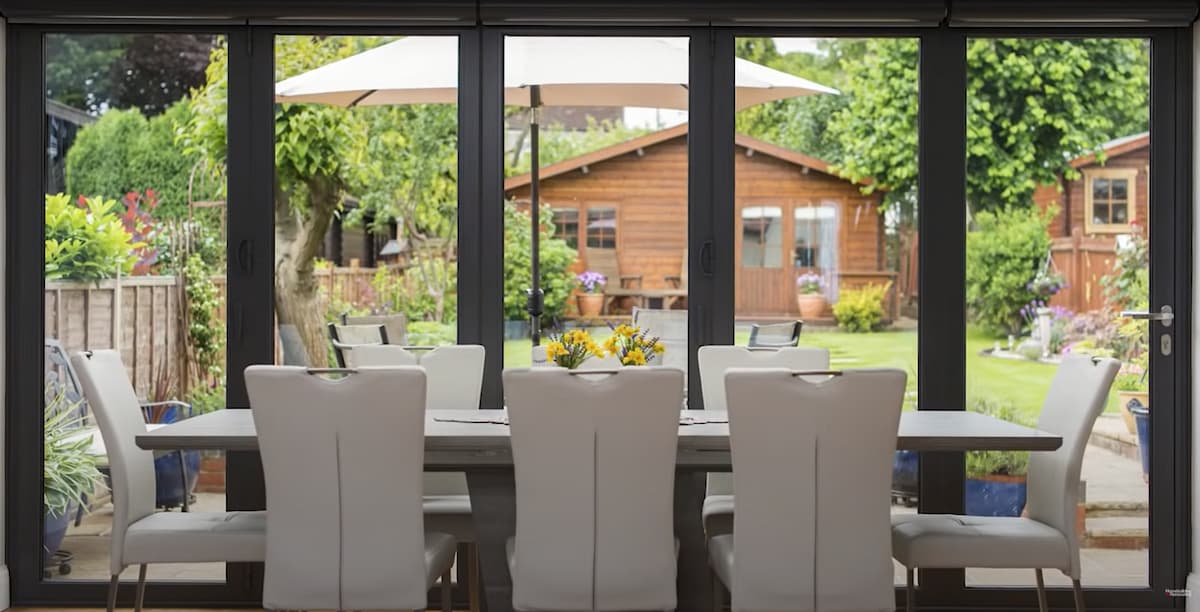
A door is an opening in a building, wall, or fence that allows entrance to or exit from a room, building, or enclosure. Doors have different sizes, shapes, types and functions.
A door is either fixed or hinged so that it can swing open for use. Usually, a door has hinges on one side and some sort of latch on the other, but not always, especially older doors have latches that are used to keep the door closed, while hinges are only used to keep it in a closed position.
Door shapes vary depending on the building style and region where there are doors installed. Doors can be made of many materials like wood, metal, fibreglass, glass etc. In spite of the material that is used to construct a door, there are some common construction components.
There are many types of doors to choose from, such as panel doors, flush doors, standard timber doors, glass doors and many custom doors and products with each with a different door thickness. If you’re looking for something fancy with good door thickness go for flush doors, a bifold door or good and strong quality glass doors.
Standard Door Size Australia
Door sizes in Australia vary. The average size of the door is around 2040 mm x 820 mm x 35 mm. That is height, width, door thickness.
It majorly depends on the width of the opening required when erecting a doorway between rooms or walls. Since there are numberless types of doors available, it also depends on the type of opening that is to be fitted with a door.
Door Sizes Australia
Standard door size calculation is based on the width of the opening. Sometimes, there are also other factors like ceiling height, wall thickness etc. that are considered while sizing a door.
Generally, a rough estimate of a standard door size in Australia is up to 2040 mm high and 820 mm wide. The thickness varies between 18 mm to 35 mm which makes it difficult to be measured in an accurate way.
However, note that if you want an exterior or garage door, the height may vary from 2000mm to 2400mm and width from 850mm to 950mm accordingly. Also, there needs to be some allowance for carpentry because most doors are not installed flush with the frame but leave a gap of about 3 mm for expansion purposes. That’s why it is recommended to make the opening 10 mm bigger than what you finally need.
Standard Front Door Size Australia
There are many factors that affect the size of a door.
Basically, to make things easy there are some standard sizes that you can go with or simply ask for an estimate and most door manufacturers may be more than happy to help you out. The choices vary from size and design as well as price range and budgets.
As mentioned earlier it all depends on your requirements and budget as well as whether your door is going outside or inside the house.
If your door is going outside, make sure it has a heavy-duty frame to keep the weather out. Don’t compromise on quality when it comes to an exterior doors because they are supposed to be stronger and more durable than interior ones. Even if you’re looking for an internal door, you’ll need certain specs like fire rating etc.
If you’re looking for a standard size then talk about width first before height because most people decide the height depending on whether they want the door to fill up the entire wall or not. So it’s better that you decide about the width first so that things can be easily figured out thereafter.
Inner Frame Height
The height of an inner frame including top, bottom and side(jamb) rails could measure around 155mm to 165mm. This value can also vary depending on your specific requirements. For instance, if you are looking for a fire-resistant industrial-grade steel framed door then it may be at least 203mm high because industrial doors are required to have heat insulation or protection up to 750 degrees Celsius. You may even need other special features like advanced locking systems etc which could affect the overall cost as well as dimensions accordingly.
Width of Door Frame
It’s possible that you may need different widths for different parts of your door frame. For instance, in case you are looking for a heavy-duty industrial door then the best width is around 235mm while for other uses normal width can be anywhere between 195-210mm.
Similar to the widths of door frames, you may need different widths for different sections of a single door as well. The standard widths are 800mm for an internal door and 760mm/845mm(H) for an exterior door. Again, if there are any special requirements regarding width then you can always discuss with the supplier to get their expert opinion.
Standard Door Frame Sizes – Exterior
The standard length of an exterior door frame is 375 mm. But this value may vary depending on your needs as well as the type of frame. For instance, some commercial-grade frameless or panel doors have a height anywhere between 1220mm to 1815mm which would ultimately increase the overall size depending on the height. Similarly, commercial doors have different widths ranging from 600mm to 1100mm which can also affect the final size greatly. Each type of door has a different frame size. This covers a bifold door, glass doors, flush doors and even panel doors.

Australian Standard Door Sizes
The standard sizes of doors are based on metric measurements with approximate corresponding imperial values. The standard door sizes in Australia are:
- Height – 2040 mm
- Width – 820 mm
Internal Door Sizes
Internal doors are usually 20-30 mm smaller than the stated dimensions.
The metric sizes are measured as follows:
Height – the overall height of the door including top, bottom and side rails.
Width – overall width of the door including hinges, but not handles or locks.
Standard internal door measurements are around 760mm in width and 1820mm in height. Depending on the type of door it can be wide as low as 440mm or as high as 2000mm. It really depends on what the internal doors are for.
Doors Sizes Australia
The typical size of exterior doors is 2800mm high by 1830mm wide, although this can vary depending on the design and usage. The metric measurements would be 80cm x 50cm. Although, it may be noted that this size would also depend on the thickness of your door.
Standard Door Width Australia
The standard width of an interior door is 845mm. This can vary for different types and uses of the door.
The most common door type for inside are:
• W600 x D600 – Residential use and these dimensions may also apply to internal office doors and bedroom/bathroom doors.
• W800 x D800 – For bedrooms or bathrooms where there is more space available, such as handicapped access doors.
• W1000 x D1000 – Used in commercial premises such as shops, offices and restaurants.
The standard width of an exterior door is 760mm. The height may vary depending on the design, but commonly it would be 1820mm high.
The metric measurements are 25cm x 15cm for exterior doors. This can also vary depending on your needs and usage of the door.
Standard Height For Door
The standard height for exterior doors is 1830 mm while interior doors are slightly smaller at 1820 mm high. Again, this measurement may vary depending upon your requirements and the location and type of hinges used on the door. Standard heights can even go as low as 1350 mm or as high as 2000-2300 mm – it all depends on what you need and where you want to use it(interior/exterior).
Standard Door Width
The standard size of an interior or exterior door frame may be around 610 mm (H) x 220 mm (W). If the frame includes glass then it may increase by 10mm on both dimensions respectively. The overall width including hinges would measure around 645mm(H) x 255mm(W) which may vary depending on the type and location of the hinges. Again, this measurement can also go up if there are any special requirements like anti-fire features etc.
Standard Door Height Australia
Height is one of the most significant parameters when it comes to doors in Australia. The standard height for an exterior or interior door lining is in the range of 1815mm-1830mm, but this can also vary depending on your requirements(if any). For example, if there are high-rise buildings in your locality then it would be better to get slightly taller doors. It’s even possible that you may get different heights for different parts of the same door like top and bottom hinges etc.
Standard Door Height
The standard height for internal doors is 2040 mm but can be as low as 1400mm or as high as 2400mm depending on the type of door and location. This variation is mostly due to the thickness of the door.
Standard Door Handle Height
The average door handle height is around 90cm. Door handles are measured from the floor to the middle of the handle, however, these measurements may vary depending on your needs. The best position is around waist height.
Door Height
The standard door height for an internal sliding wardrobe door is 2000mm, but that can vary according to the actual requirements of a person. The height of a standard interior or exterior door from floor to header (lintel) may be around 1770mm-1830mm. In some places, these are called high-rise doors and can come as 3500 mm high as well.
Standard Door
The standard internal door size is 760mm wide by 1820mm high. The height may vary depending on the design, but commonly it would be 1820-1830mm high. Australian Standard Door sizes are based on metric measurements with approximate corresponding imperial values. These measurements are usually given in millimetres (mm).
Standard Interior Door Size Australia
The standard thickness for an exterior door is 59-65 mm, whereas for an interior one it would be 40-45 mm thick. This measurement however depends completely on your requirements and the location. The standard thickness for an internal door is 35-40 mm, but they can be as high as 45-50 mm or even more depending on your needs.
Door Width
The standard door frame width in Australia is either 645 mm or 710 mm for an exterior door, while there are no specific dimensions for interior ones. This may depend again on your requirements and the type of hinges that are used to hang the door(s).
Door Width Australia
For standard door widths in Australia, common measurements are 795 mm and 860 mm for interior doors and 760/845/900/1220 for exterior doors(in order of preference). But again, these dimensions vary depending on your needs and budget. If you’re looking for a wider door, you may be required to spend a bit more.
Standard Internal Door Width Australia
Standard door sizes for hidden door hinges range from 595 mm (H) x 285 mm (W) and 635mm (H) x 295mm (W). These dimensions can also vary depending on the type of door and your requirements. For example, if you’re looking for an internal sliding door then it is better if thickness measures around 18-20mm so that it can handle heavy usage with ease.
The distance between the horizontal lines that are drawn from one edge of a door to another edge with or without an additional overhead lintel is known as the width of a door. The standard size for this distance is 600 mm.
In Australia, most doors are made from lightweight timber using plywood construction. This saves a lot of cost and time when working with heavy materials in a hot climate. Plywood is not used in commercial-grade doors because it does not last long in humid environmental conditions such as those found in coastal cities like Perth. It also depends on the type of material you plan to have on your door. Commercial-grade doors use solid timbers that are treated properly to prevent damage from termites and other pests.





